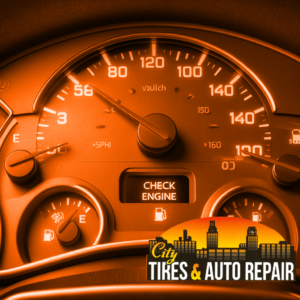Check Engine Light

Diagnostic Testing:
Technicians use specialized diagnostic tools to read the error codes from your vehicle’s onboard computer. This helps identify the specific issue causing the Check Engine Light to illuminate.
Oxygen Sensor Replacement:
A faulty oxygen sensor can trigger the Check Engine Light. Replacing it can improve fuel efficiency and reduce emissions.
Gas Cap Replacement:
A loose or damaged gas cap can cause the Check Engine Light to come on. Simply tightening or replacing the gas cap can resolve this issue.
Spark Plug and Ignition Coil Replacement:
Worn-out spark plugs or faulty ignition coils can cause misfires, leading to the Check Engine Light turning on. Replacing these components ensures proper engine performance.
Catalytic Converter Repair or Replacement:
The catalytic converter reduces harmful emissions. If it’s damaged or clogged, it can trigger the Check Engine Light. Repairing or replacing it ensures your vehicle meets emission standards.
Mass Air Flow Sensor Replacement:
The mass air flow sensor measures the amount of air entering the engine. A faulty sensor can cause the Check Engine Light to illuminate. Replacing it helps maintain optimal engine performance.
Vacuum Leak Repair:
Vacuum leaks can cause the Check Engine Light to come on and affect engine performance. Technicians identify and repair these leaks to ensure the engine runs smoothly.
These services help diagnose and fix the issues causing the Check Engine Light to illuminate, ensuring your vehicle runs efficiently and safely. If your Check Engine Light is on, it’s important to have it checked by a professional to prevent further damage and costly repairs.